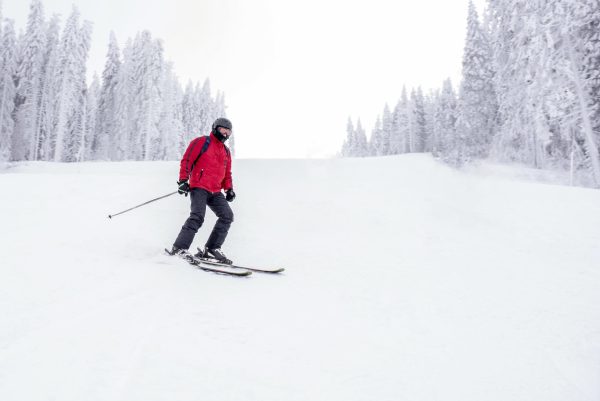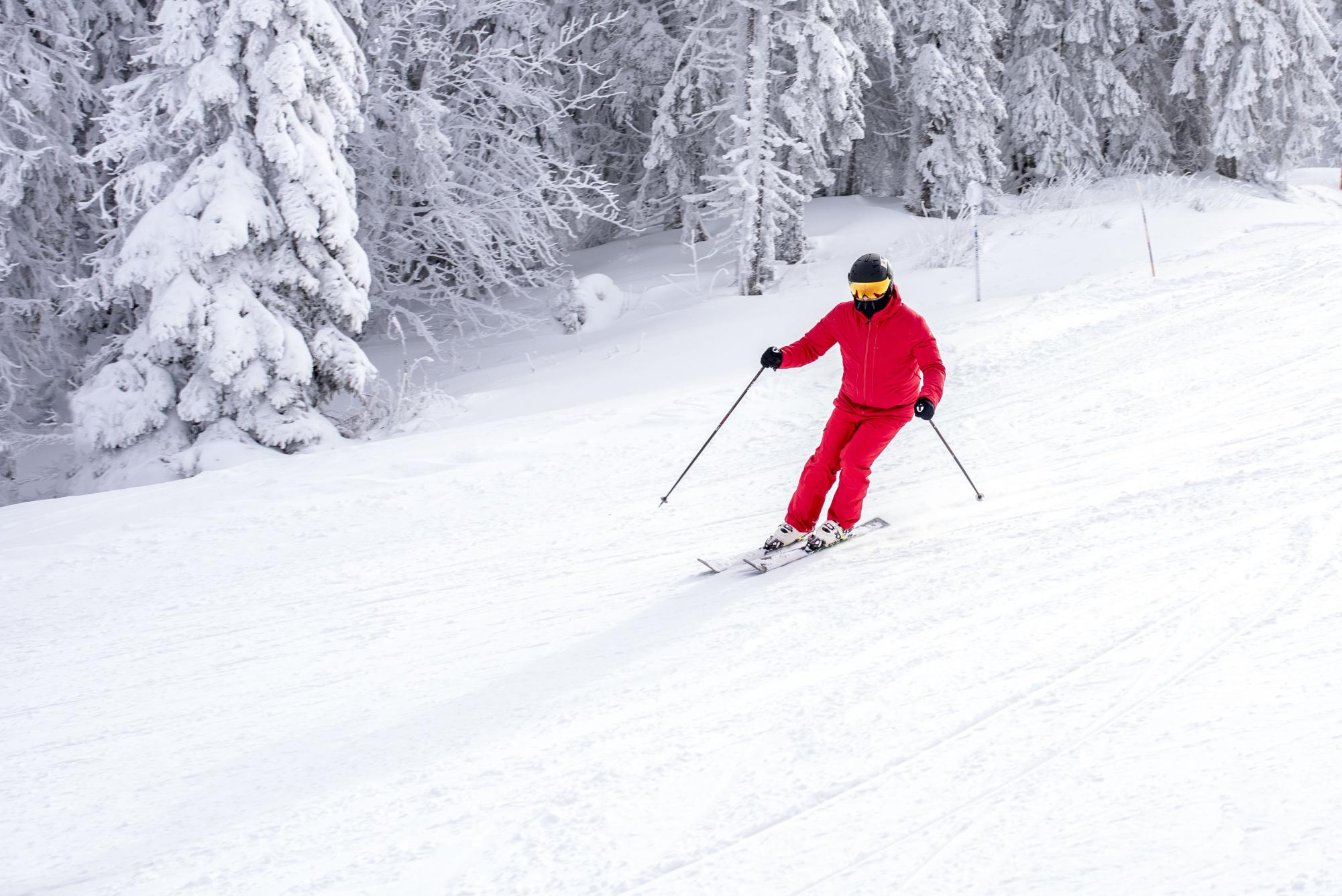My mom used to tell me all about her adventurous high school days in Lake Tahoe, skiing down a slope right behind her school for physical education credits. Since she told me about the recreational sport, I knew I wanted to get out on the mountain. To say I learned to ski at 8 years old is an understatement, I felt like I was learning how to fly. It felt unstoppable, and that feeling has stuck with me ever since I first hit the slopes.
The one condition of learning a winter sport was that I had to learn to ski before learning to snowboard. I enrolled in a weekend skiing camp, and the learning curve of skiing was very enjoyable. Skiing allows you to glide on the snow with both feet secured on narrow skates. The first things that instructors tend to teach are how to stop by making your skis into a pizza shape to stop motion, and how to go forward or turn using a “french fry” motion, keeping your skis parallel. Though skiing makes me a bit hungry thinking about the analogies, this foundation of knowledge is adaptable for all ages, and I find it engaging, especially for the younger crowd. This is the complete opposite of snowboarding, which didn’t go over so well with my new bus buddy who was learning the recreational sport in another group next to me. She fell over and over again and eventually became very discouraged. She wanted to quit on the ride home. Snowboarding requires immense perseverance to begin as you need balance and core strength, which isn’t easy for both younger and older learners.
This leads to my overwhelming concern with snowboarding safety. About 7/10 snowboarders I pass on the mountain are always without a helmet. Snowboarding has always had a certain stigma around it, and young boarders are often criticized for the way they dress on the slopes; the “too cool for school” aura about them. This stereotype has existed for years, and although not all snowboarders fit into that category, many are rude, and some slopes have even banned them. Once, I was cut off by a border that was bombing down the side of a black diamond, and it was one of my first hard runs. I slipped and fell, sliding down almost ¼ of the way down the mountain. They remind me of kids riding e-bikes without helmets and then getting into traumatic accidents. Most of them don’t follow mountain safety, and most are without protective gear. This is problematic because snowboarders are more prone to brain damage injuries than skiers are. Natalia Hawk from Snow Best says, “Although skiers do fall, they are a little less likely to land on their heads – they’re more likely to sustain a knee or leg injury of some description.” According to the National Library of Medicine, 5945 injuries on the slopes and 3328 in terrain parks were sustained by snowboarders from 2000-2005 compared to 4883 slope injuries and only 625 in terrain parks sustained by skiers.
Though slopes can be tricky to navigate, that is my favorite part of skiing. Skiing allows m ore mobility within your feet, which means more control over sharp turns, and physicality required to move your body in one direction or the other. Due to these reasons, black diamond runs for intermediate skiers are easily navigable. Traversing for snowboarders is difficult. Let’s be honest, they only have one edge compared to skiers who are working with 4, making skis more technically functional. Due to snowboarders’ double edges, coming to abrupt stops or slides causes snow to be scraped off in strange places, changing the terrain of the mountain and exposing icy ridges. This poses a safety hazard for skiers and snowboarders, especially those who are just starting out.
ore mobility within your feet, which means more control over sharp turns, and physicality required to move your body in one direction or the other. Due to these reasons, black diamond runs for intermediate skiers are easily navigable. Traversing for snowboarders is difficult. Let’s be honest, they only have one edge compared to skiers who are working with 4, making skis more technically functional. Due to snowboarders’ double edges, coming to abrupt stops or slides causes snow to be scraped off in strange places, changing the terrain of the mountain and exposing icy ridges. This poses a safety hazard for skiers and snowboarders, especially those who are just starting out.
Now I’ve had my share of yardsales on the slopes. If you aren’t familiar with a yardsale, it is when you take a tumble and your equipment pops out of place, leaving you sprawled out on the ice like a fish out of water. This is humiliating if anything, but it goes to show that skiers have a bit of equipment in comparison with snowboarders. The most beneficial thing about skiing equipment however is once you’re done growing, you can get sized to a ski boot that will last for a very long time. The durability of skiing equipment is something that snowboarding can’t match. The countless amount of times I’ve been on the mountain with my mom and the bindings on her snowboard snap in the middle of a turn is incredible. Though the boards themselves are very well made and are worth the purchase, the bindings that strap the snowboarders’ boots onto the board itself are plastic, and if they break while snowboarding this can result in a multitude of injuries.
As far as special features go, moguls are ones that generally exclude snowboarders from participation for a few major reasons. Moguls have rounded mounds on a run, and skiers use this feature as a fun challenge. However, for most snowboarders, it is almost impossible and takes a lot of skill, or it is taxing on the body physically. This is because of how the snowboarder is positioned and approaches the bumps. Cat tracks are also typically difficult for snowboarders, which are fun for a skier and necessary to navigate the mountain. Cat tracks are long strips of slick snow that don’t have a particular incline. As a snowboarder, you need momentum to continue in motion, so if you find yourself on a cat track with a snowboard, good luck.
Though there is substantial research to show that snowboarding can be dangerous, the same case can be made for skiing. If you’re out on an icy hill, you are already exposed to natural risks. Additionally, coming into proximity to the built-up snow surrounding a tree can’t trap and suffocate a skier or snowboarder. Despite differing opinions on which sport is superior, one thing should remain true, safety. However, the feeling alone of skiing is what I find to be the most endearing. The satisfaction of crisp turns, the swift gliding motion of your skis along the ice, and your poles skimming the surface of the icy edges just cannot compare to the often dangerous and challenging nature of snowboarding.



